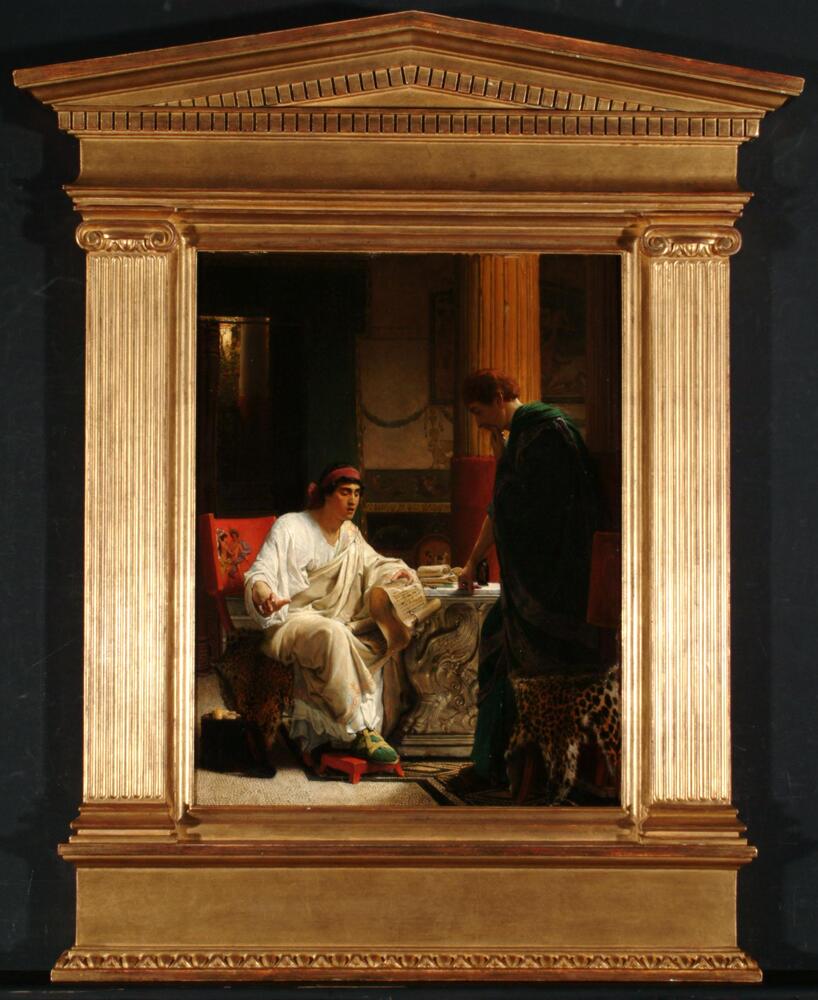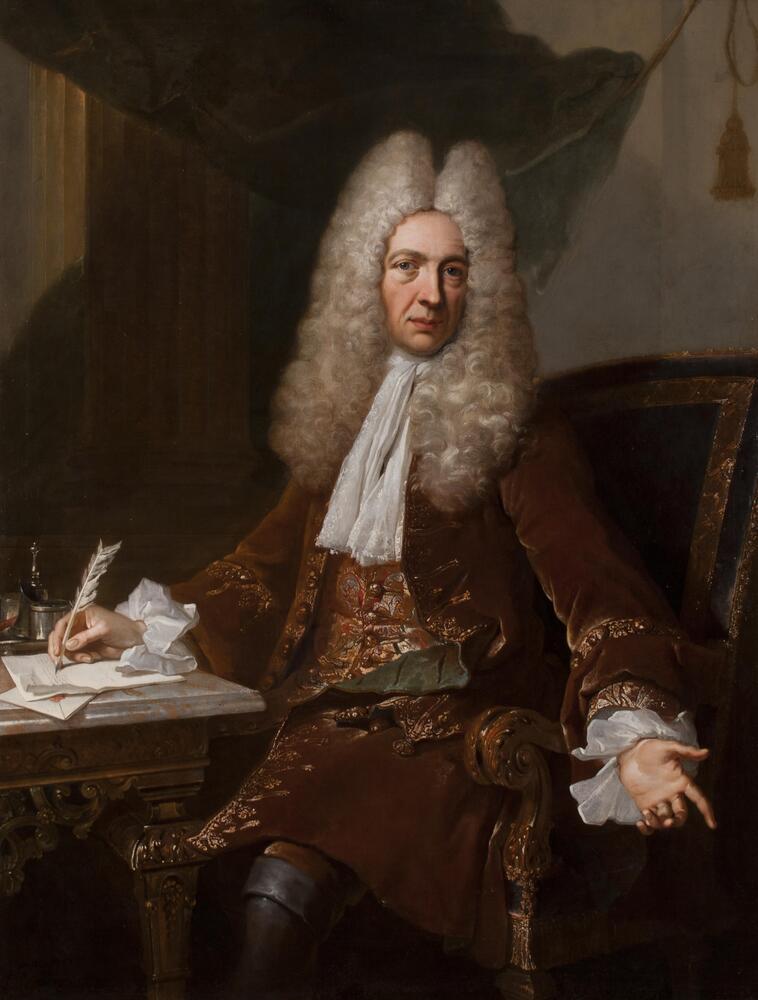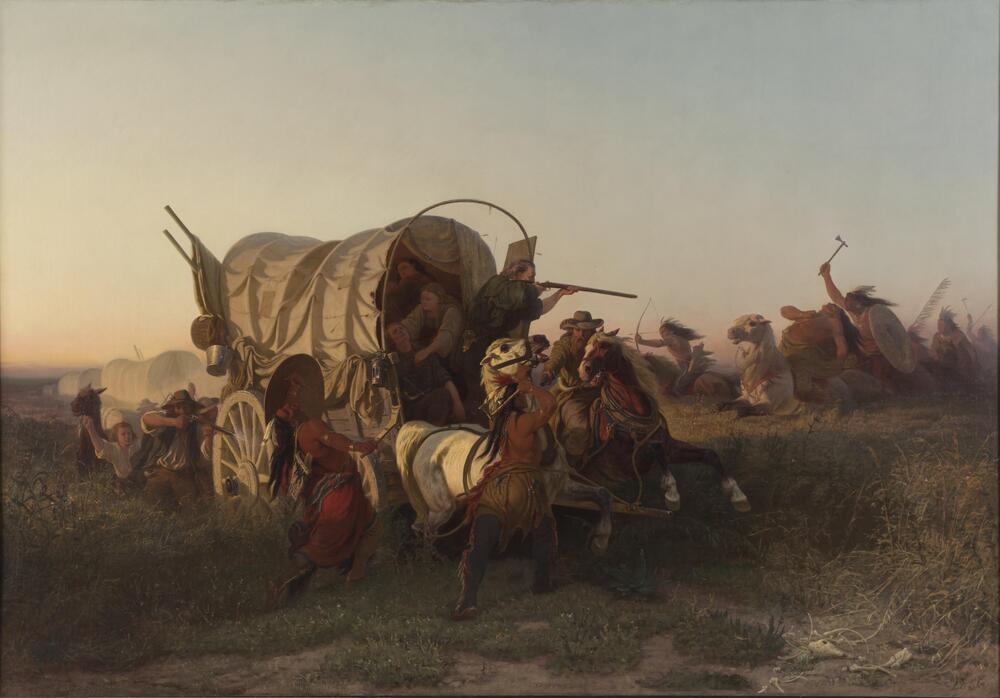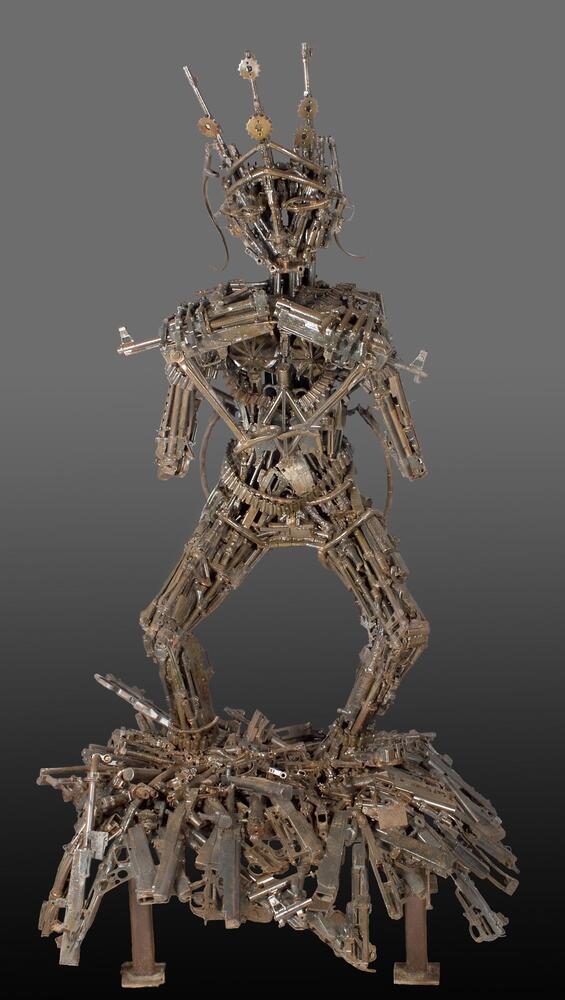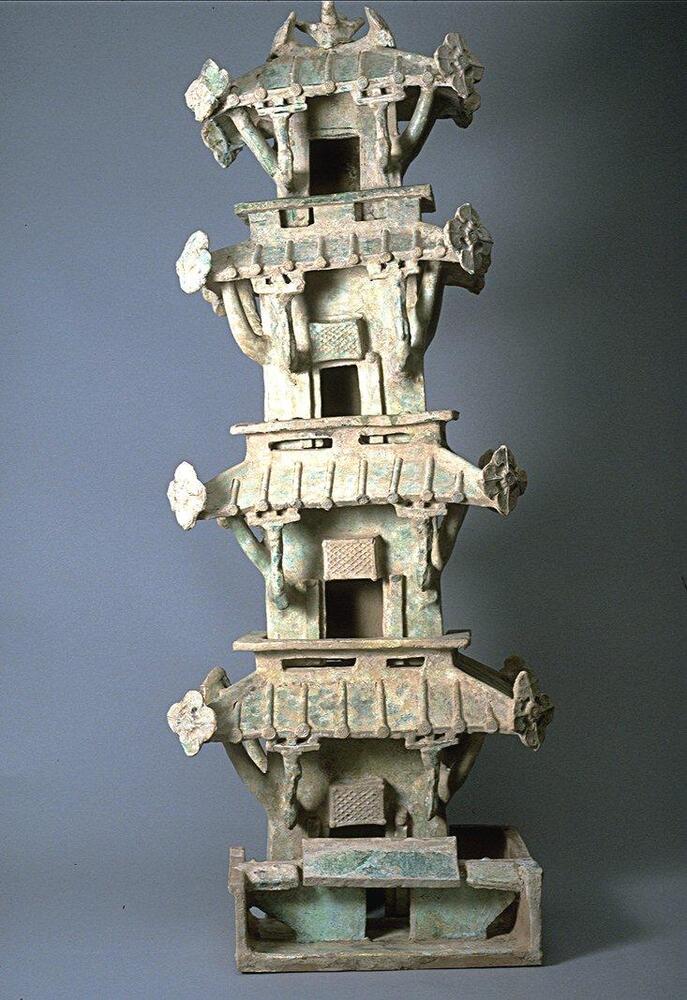Third Grade: History Mysteries! Think Like an (Art) Historian
Docent Curricular Tour
Discussion: Historians use primary sources for clues as to what / when / why. Artists choose materials and subject matter that best expresses their message. This tour uses art as a primary source that children can mine for clues about history and also about an artist's motivations and choices about materials.
Ask lots of questions. Historians ask questions such as:
- What happened (primary and secondary sources)
- When did it happen? (chronology and timelines)
- Who was involved? (diaries and written evidence)
- How and why did it happen? (cause and effect)
- Can you be a history detective? (simulation to solve historical problems)
Note to docents: recall ideas from Heath and Heath’s book, Made to Stick. History Mysteries is an ideal place to use the unexpected as a learning device. Create a mystery that the students can solve and they will be engaged as they Sherlock to the answer. Highlight a knowledge gap--ask an intriguing question that they can help you puzzle out.
Social Studies Concept: use primary and secondary resources, chronology and timelines, diaries and written evidence; Explain how historians use primary and secondary sources to answer questions about the past; Describe the causal relationships between three events in Michigan’s past (e.g., Erie Canal, more people came, statehood). 3 – H3.0.7 Use a variety of primary and secondary sources to construct a historical narrative about daily life in the early settlements of Michigan (pre-statehood). 3 – H3.0.10 Create a timeline to sequence early Michigan history (American Indians, exploration, settlement, statehood).
Art Concept: ART.VA.I.3.1 Compare the use of various materials to communicate ideas and sensory experiences in an artwork. Describe, discuss, and model the elements of art and principles of design to communicate ideas.
Stop 1: Alma Tadema – Vespian hearing from General
Alternate: Cache-Cache (Hide and Seek) or Visit to the Museum
Engagement strategies:
· How do you find out from your friends what’s new, what’s going on?
o E-mail? Voice mail? Texting?
· How do you think your grandparents got their news?
o letters, phone
· 200 years ago?
o pony express (?)
· 2000 years ago? Now that is a mystery, isn’t it! Let’s look at a painting that can help us understand that.
Questions/Talking Points:
· This painting shows a guy named Vespasian at his desk. Vespasian had just gotten really good news – what is his reaction? Excited? Why/why not?
· How did it come to him? Who brought it? What is it written on?
· Does this look like someone we would see today such as man in his office, reading his mail? Why or why not? Let’s see how many things are different. What do we see? [men, scroll, clothing, setting, etc.]
· Inform of subject matter
Background for Docents:
Vespasion subjugated Judaea during the First Jewish–Roman War (66–73 CE).
While Vespasion was besieging Jerusalem, Nero committed suicide (68 CE) precipitating a crisis of succession at home (i.e, Rome). After the very short terms of three other very short-lived emperors, Vespasion was declared emperor in 69 CE and ruled until 79 CE.
His son, Titus, was left in charge of the seige of Jerusalem. In 70, he captured Jerusalem, destroyed the city and the Second Temple. THIS IS THE NEWS VESPASIAN HAS RECEIVED. For this achievement Titus was awarded a triumph. The Arch of Titus commemorates his victory to this day.
Vespasian is remembered by Josephus, in his Antiquities of the Jews, as a fair and humane official, in contrast with the notorious Herod the Great. As emperor, Titus is best known for completing the Colosseum, begun by his father, and for his generosity in relieving the suffering caused by two disasters, the eruption of Mount Vesuvius in AD 79 and a fire in Rome in 80. After barely two years in office, Titus died of a fever in September, 81 CE. He was deified by the Roman Senate and succeeded by his younger brother Domitian.
· This was painted almost 2000 years after the events depicted, i.e., notice of the fall of Jerusalem. What do you think the artist did to make it look accurately Roman?
o Alma Tadema studied ruins at Pompeii that were being excavated at the time he painted this. He also studied the history of Rome. Artists do lots of research before they work. Elements from Pompeii add period authenticity (show students picture of Vespasian coin, photo of Pompeiian table legs with griffins, attached).
· This is painted on panel rather than canvas, a technique that was very old fashioned in the 19th century. It reminded people of the past.
o artists use materials to express their ideas.
· Also, the frame is in the shape of a Roman temple facade.
· Artists do lots of research before they work
Artists tell a story
Stop 2: Oudry, M. Bachelier
Alternates: Digby Children, General Foy
Engagement Strategies:
· Did you have your school picture taken at the beginning of the year?
· Why do we take these?
· Did you choose your clothes for that day?
Questions/Talking Points:
· A picture painted (or photo taken) to show a person at a particular time and place is a PORTRAIT
· What do you notice in this PORTRAIT [hair, fancy clothes, pen, book]
· What might these things tell us about this man? [he was wealthy, literate]
· Does he look friendly? How can you tell?
· Summarize – What did M. Bachelier want to tell us about himself?
· Artists and patrons choose carefully what to include in order to tell us what they want us to know
· If you were having a portrait painted, what would you want the artist to include?
· What would you wear?
· Why?
Possible Props/Activities:
· Examples of other Oudrys with the same props and clothes
· Oudry animal art
· Compare to Ammi Phillips – stick pin portrait
Stop 3: Attack on an Emigrant Train
Engagement Strategies:
· There sure is a lot going on in this picture
· Let’s take a moment to just look
Questions/Talking points:
· Tell me one thing you notice in this picture [wagon, Indians, fight/attack, guns, bows and arrows].
· Is this picture of something happening now?
· When was this?
· Where was this?
· What exactly is happening?
o Train heading west – note how long it is.
o Some people in wagon – women and wounded
o Some on foot/horseback – settlers and native americans
· Who is still?
· Who is moving?
· Who is attacking whom?
· Who will win? What do you see that makes you think that?
· Is there more to the story than we see here?
· Interesting that the artist is not American. This was painted by a young German man who emigrated to the US. If it was painted by a Native American what might be different?
Stop 4: Apsara
Engagement Strategies:
· Give me one word that describes how you feel about this piece.
· What makes you feel this way?
· How would you describe this figure [imposing, strong, scary, large]
· Summarize
· Show photo of Apsara dancer
o Compare features – what do we see on sculpture and dancers?
· Why would the artist choose this material? Who would have so many guns?
· This artist uses guns to send a message of peace
· Construction à what keeps this together? How did the artist build this? Welding
Possible Props/Activities:
· Photos of dancers
· Angkor Wat
· Welding
· Other works by this artist
iPad resources: video of apsara dancers
Stop 5: Model of a Four-story Watch Tower, China, 1st century
Engagement Strategies:
· What ways do we get information? Where do you go to find things out, to learn about things? Books, TV, internet...
Questions/Talking Points:
· How do we learn about what happened years ago?
· Look at label – note time period –
o (do some math…note current year and how old this is).
· One way we can find out about the past is by what was left behind. People who study what people leave behind are called archaeologists [introduce archaeology].
o Background for docents: There were no cameras, but the Chinese started writing on bones about 3000 years ago [ca. 1000 BCE]! These were oracle bones, not written histories. Clerical record keeping began approximately 2000 years ago [clerical script begun ca. Qin dynasty, 220-206 BCE].
o
[remember… create mysteries to solve… this one has the added benefit of
being kind of macabre which kids will remember...]
· During the Han Dynasty in China, about 2,000 years ago, people spent much of their lives preparing for their death! Rich people were buried with things from their daily lives, like horses, pigs, fancy clothes, and even servants.
· They weren't buried with their real animals and servants, though -- they were buried with small-scale copies made of wood, bronze, or clay, like this watchtower.
o
[Artists choose materials and subject matter that
best express their message.
· The Chinese believed that when you died, your spirit traveled to another world, but your body stayed behind in the tomb where it needed these things for comfort and support.
· Real watchtowers that looked like this miniature copy were always found on rich people's land.
o [Historians use primary sources for clues as to what/when/why.]
· The man at the top door, is probably the master of the estate. From the highest level of the tower, he can look out for problems on his land: enemies approaching, people stealing his rice, or pigs eating his crops. His servants probably stood guard at the bottom of the tower.
· Do you see anything else in this case that looks like this tower and/or is made of the same material? Sometimes things that look alike, have the same style, or are made of the same material, are from the same period.
· Most of the discussion of the chinese watch tower comes from this web page: http://www.bampfa.berkeley.edu/education/kidsguide/han/han.html
Alternatives:
· Spirit jar
· Tombstone
· Equestrian oil lamp from LL open storage
· Items from open storage
Part of 1 Learning Collection
<p>Docent Curricular Tour</p>
Rate this Resource
AVG: 0 | Ratings: 0
& Author Notes
Creative Commons by-nc-saLast Updated
April 25, 2017 1:47 p.m.Report
Reporting Policy
